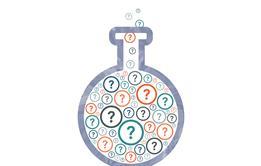Brush up on dental health, and find out more about acid erosion
A dentist has contacted the students to determine which of three drinks is the least acidic, and hence which is the least likely to cause tooth enamel erosion.
Pre-lab questions
(Remember to give references for any information that you find out.)
- White wine, lemonade and orange juice are all known to be acidic. Find out the name and chemical structure of the main acids found in each of the drinks?
- For each of the acids in question 1, indicate if they are strong or weak acids. For the weak acids give a pKa value for all possible deprotonation sites.
- Many students get confused when describing the difference between a strong and a weak acid and a concentrated and a dilute acid. Explain the difference as clearly and succinctly as you can.
- An acid-base titration can be used to determine the concentration of an unknown acid or base. When adding a base to an acid in a titration, the pH changes from acidic (pH < 7) to basic (pH > 7). Sketch the titration curves obtained in the following titrations:
- addition of a strong base to a strong acid
- addition of a strong base to a weak acid
- addition of a weak base to a strong acid
- addition of a weak base to a weak acid
- In order to correctly identify the exact point of neutralisation, an indicator must change colour quickly in the pH range at which neutralisation occurs. For each of the titrations in question 4 a-d above, indicate a suitable indicator.
Equipment
Chemicals
- Access to (NaOH) Sodium Hydroxide of varying concentrations (0.1 M [Irritant]; 1 M [Corrosive]; 2 M [Corrosive]). Approximate concentrations are adequate‡
- Phenolphthalein indicator [Highly flammable; Harmful]
- Samples of orange juice, lemonade and white wine (30 cm3 samples of each)
- White wine, 125 cm3
- Lemonade (opened several days previously to allow all the CO2 to come out of solution), 125 cm3
- Orange juice, 125 cm3
- Distilled water
‡ Each group should only need approx 50 cm3 of 0.1 M NaOH, 10 cm3 of 1 M NaOH and 5 cm3 of 2M NaOH in total if they try and neutralise the acid in 10 cm3 samples of each of the drinks
Apparatus
- Disposable pipettes
- 50 cm3 burette*
- Funnel
- Burette stand and clamp
- White tile
- Distilled water
- Beaker, 250 cm3
* The equipment must either be labelled with its accuracy or the information provided separately.
† If the titration is carried out on 25 cm3 samples of drink, the approximate titres are; white wine 23 cm3 ; orange juice 34 cm3 ; lemonade 17 cm3 (although this will vary with exact origin of drink)
For the titration, each student group will therefore need access to 150 cm3 of each drink and 600 cm3 of 0.1 M NaOH of known concentration (allowing for washing etc).
Health, safety and technical notes
- Read our standard health and safety guidance.
- Wear eye protection.
- Wear clothing protection if desired.
- Sodium hydroxide of varying concentrations (0.1 M [Irritant]; 1 M [Corrosive]; 2 M [Corrosive]). See CLEAPSS Hazcard HC091a
- Phenolphthalein indicator [Highly flammable; Harmful] See CLEAPSS Hazcard HC032
Put this in context
Find out how senior scientist, Phillip leads a team of researchers who look to improve the performance of household products such as toothpaste and shampoo.
Downloads
Acid erosion student sheet
PDF, Size 0.13 mbAcid erosion teacher & tech sheet
PDF, Size 0.54 mb
Additional information
This resource was developed by Catherine Smith, RSC School Teacher Fellow at the University of Leicester 2011 – 2012, produced as part of the National HE STEM Programme

Problem based practical activities

Discover how chemistry can relate to real world problems, so students can put their science knowledge into context.












































No comments yet